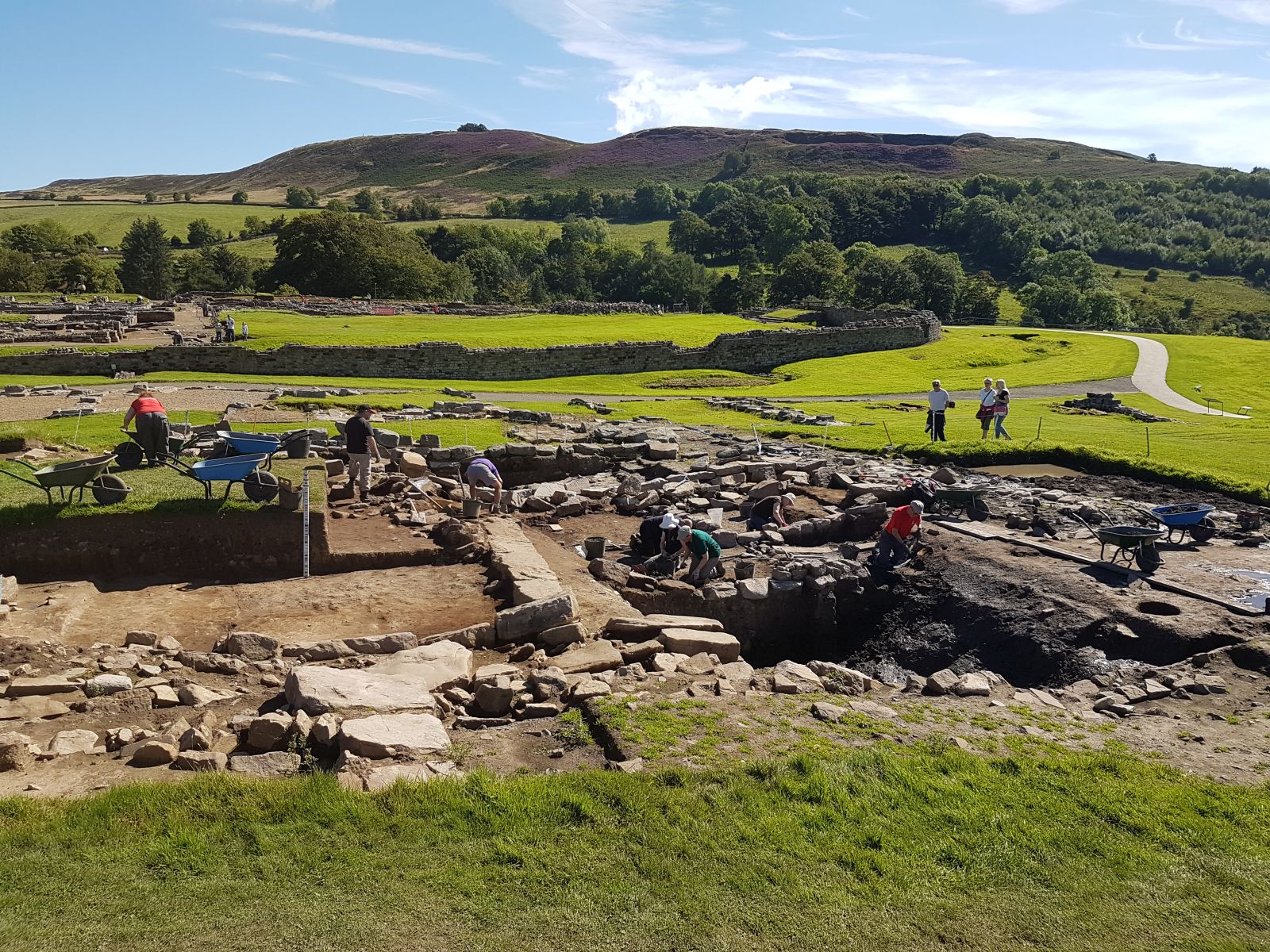Stepping into Roman footprints
11 June 2018
Dr Andrew Birley explores the fascinating legacy of Roman Britain at Northumberland’s famous Hadrian’s Wall.
The Northumberland National Park covers a big area, some 405 square miles. It was a small part of the Roman Empire which grew to cover 1,699,000 square miles. Yet despite the large discrepancy in the two it can be argued that some of the best bits of the Roman Empire, such as Hadrian’s Wall, are preserved and concentrated like no other within the boundary of the National Park.
If you visit the Park and have not come to Hadrian’s Wall, you will be missing out on a journey through time and a landscape which firmly connects the present to the past, regardless of where you come from when you started that journey.
 At the edge of an empire! Hadrian’s Wall in Northumberland National Park. Photo credit: Dr Andrew Birley.
At the edge of an empire! Hadrian’s Wall in Northumberland National Park. Photo credit: Dr Andrew Birley.
There is a common misconception about Hadrian’s Wall. It is that the Romans ‘conquered the land’ and bent it towards their will like the ancient people of Britain. An alternative view is that they worked with what they had, the natural beauty of the Whin Sill ridge, a volcanic outcrop of rock pushed up out of the ground 295 million years ago, rising to form a barrier between north and south. The Wall and many of its forts cling to the top of this ridge, sometimes stubbornly and at other points with far less conviction. The weather-beaten remains of the Wall add a few metres of height to the tallest of the surviving ridges and cliffs and by doing so draws your eye to the edge of an empire long gone.
It is a landscape which demands and yet cultivates your imagination, allowing each visitor to have their own personal appreciation of what it may have once been like. As the modern visitor takes in the now quiet and seemingly natural beauty of this Park the size of the ancient population and the people who were once a vital part of this frontier zone are becoming clearer through archaeological research. Through excavation, research and survey we get to know more about the ‘Romans’ every year and each modern visitor to the Park helps us get that little bit closer to the ancient inhabitants by supporting this work either directly or indirectly.
The military communities who built and maintained Hadrian’s Wall came from the Netherlands, Belgium, Spain, North Africa, France, Switzerland, Syria, Greece, Italy, Germany, and Iraq. The soldiers may have been the minority of those present in most cases, and although today you can see the proud remains of forts like Housesteads they covered a much smaller area than the towns outside the fort walls, represented a fraction of what was once there. It has been estimated that for every soldier there may have been as many as four to five others present, the wider military community, women, children, freedmen and slaves. This frontier was then, as it is now, a family affair and both ancient and modern visitors have travelled to the area with their culture, food, religion and politics and found a connection to the landscape and created their own part in the story of this ancient frontier.
 A Vindolanda Excavation. Photo credit: Andrew Birley.
A Vindolanda Excavation. Photo credit: Andrew Birley.
At Vindolanda, on the southern tip of the National Park, where excavation still takes place each summer, the shoes of those ancient peoples as well as their letters have been preserved in the rich anaerobic mud. Over seven thousand shoes have been found so far, from marching boots to baby boots, all made from leather. The letters were made from thin strips of wood, written on with ink and are about the same size as modern postcards. The people writing 2000 years ago talk about the weather and the state of the roads, birthday parties, shopping, beer, and every now and then the ‘Brituncculi’, nasty little Britons.
When the modern-day visitor to Vindolanda, Hadrian’s Wall or another part of the Northumberland National Park makes a visit they are standing in the footprints of this incredible and diverse population. The modern aspirations and the contents of today’s postcards are often not so different from the ancient Romans and the connection is made once more. By visiting the National Park and sites like Vindolanda you help to support and preserve this legacy, each step you take is matched by one from 2000 years ago and it sometimes feel like they are walking beside you the whole way.
By Dr Andrew Birley,
CEO & Director of Excavations at the Vindolanda Trust
The Vindolanda Trust is a registered charity that researches, manages and cares for the sites of Vindolanda and Carvoran, both of which sit within the Northumberland National Park and are parts of the Frontiers of the Roman Empire World Heritage Site at Hadrian’s Wall. Live excavation takes place at Vindolanda each year between April and September and each year amazing discoveries are made. For more information go to www.vindolanda.com
The Society for the Promotion of Roman Studies was founded in 1910 to advance the understanding of ancient Rome and the Roman Empire. Its 2,000 members have an international reach and encourage Roman studies by supporting research and publications, providing training opportunities for young researchers, promoting the teaching of Latin in schools, as well as sponsoring conferences, public lectures and site visits. Every year the Society publishes a comprehensive round up of Roman research in Britain in its journal Britannia. For more information go to http://www.romansociety.org/
